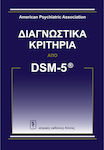Skroutz Buyers Protection
Προσομοίωση συστημάτων διακριτών γεγονότωνCode: 11801208
- Authors: Βασίλης Κουϊκόγλου, Δημήτριος Κωνσταντάς
- Publisher: Disigma
- Μορφή: Soft Cover
- Έτος έκδοσης: 2016
- Αριθμός σελίδων: 376
- Κωδικός ISBN-13: 9789609495837
- Διαστάσεις: 24×17
Similar products
 Top rated
Top ratedScientific Books
Προς τ’ άστρα, A magical journey into the world of Astrophysics
Ad from MykyklosAdded Top rated
Top rated Top rated
Top rated








Scientific Books
Ο Μύθος Του Φυσιολογικού, Trauma, disease and healing in a toxic culture
Ad from SilverProductsAdded
All shops
Prices are calculated for:Luxembourg, Other Payment Options
- 24,00 €
- 24,00 €
Description
In this book, techniques for simulation, statistical analysis, and optimization of systems using discrete event models on the computer are presented. Discrete event models allow the description of complex systems with many interdependent components, which may have continuous evolution and undergo abrupt changes at random times.
Emphasis is placed on the development of simulation models from scratch, which take the form of algorithms using three simple programming commands: iteration (for i = 1 to n), control (if-then-else), and either conditional iteration (while-do) or jumping to another point in the program (go to). These commands exist in all programming languages. A novelty of the book is that the algorithms are presented in natural language.
This book is aimed at undergraduate or postgraduate students as well as professionals involved in operations research or production and service management. A significant part of the book presents elements from probability, stochastic processes, and statistics that are necessary for system simulation. However, a good knowledge of the basic concepts and computational tools of probability theory and differential and integral calculus is required to study the book.
Chapter 1 presents concepts of computer system simulation. Systems are classified as deterministic or stochastic and as discrete time, continuous time, discrete event, or a combination of them (hybrid systems). Concise mathematical models of such systems and simple simulation algorithms are presented.
Chapter 2 presents methods for generating random numbers that the computer uses to mimic the evolution of random phenomena that affect the systems we want to simulate. At the beginning of the chapter, concepts from probability theory and random variables are summarized.
Chapter 3 develops simulation algorithms for flow systems such as queues, storages, lines, and production networks, as well as algorithms for Markov chains.
Chapter 4 examines applications of statistics in simulation: determination of distributions of random parameters that affect a system, determination of the minimum required number of simulations for accurate performance estimation of stochastic systems, comparison of similar systems, and elimination of transient phenomena.
Chapter 5 presents sensitivity analysis methods in queueing systems and Markov chains. By applying such methods, one can estimate the performance of a system with specific operating parameters with just one simulation, as well as what would happen if one or more parameters were changed (for example, if the number of employees at the counters of a bank increased or if the production rates of certain machines in a factory decreased). At the end of the chapter, the integration of simulation into an optimization algorithm is described.
Chapter 6 provides an introduction to the Arena software, which facilitates the development of simulation models, the execution of simulations, and the statistical analysis of their results.
Finally, a fairly extensive presentation of practical results and applications of queuing theory is made in Appendix A at the end of the book. Some results of queuing theory are used in the book to verify the accuracy of the simulation results
Specifications
- Genre
- Statistics
- Language
- Greek
- Format
- Soft Cover
- Number of Pages
- 376
- Publication Date
- 2016
- Dimensions
- 24x17 cm
Important information
Specifications are collected from official manufacturer websites. Please verify the specifications before proceeding with your final purchase. If you notice any problem you can report it here.







































